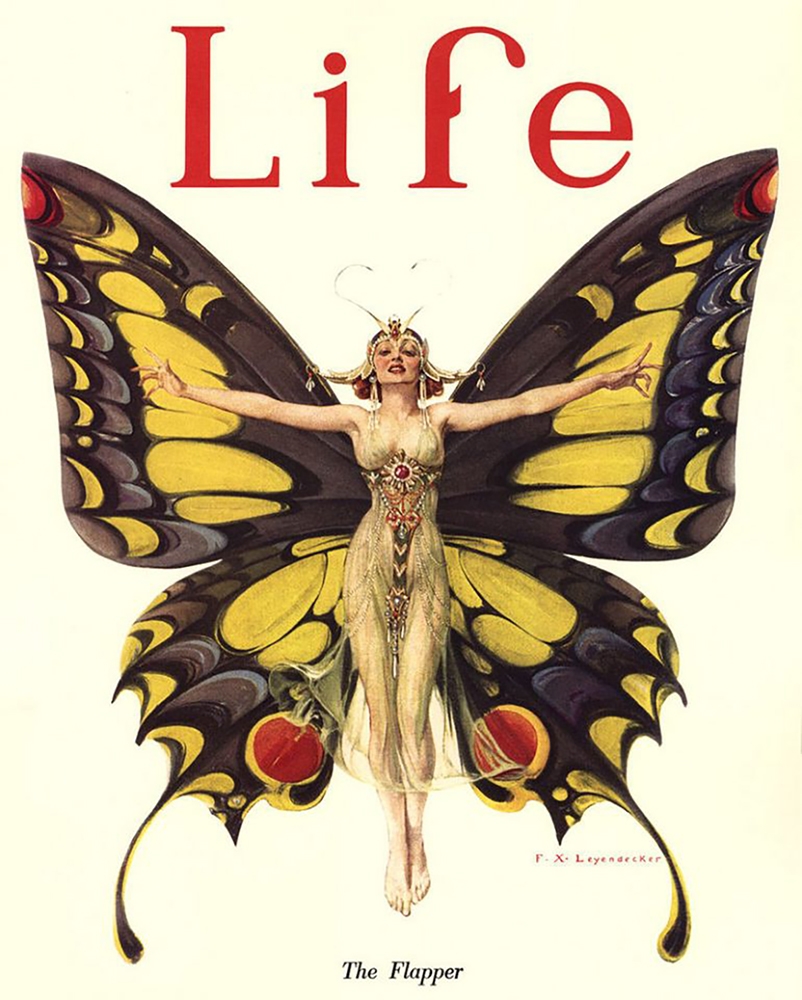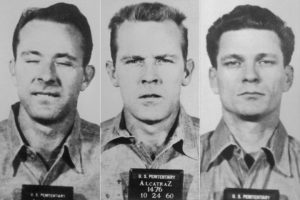Winner of the Fall 2016 StMU History Media Award for
Best Article in the Category of “Culture”
When one thinks of the 1920’s era one immediately thinks about Flappers. A flapper was considered a young woman who was very fashionable. This was a young female who enjoyed life to the fullest, flouting her unconventional standards of behavior and carefree party lifestyle.1 The spirit behind this movement was all about leaving the traditional ways of life behind and transforming into an independent woman.

Before World War I, the concept of femininity was referred to as the Gibson Girl. This term was used to describe these new independent and often well educated women. Gibson girls wore their hair long, pinned up and adorned with beautiful hats. They completed their ensemble by wearing long skirts and blouses that buttoned up to their necks. Despite their feminine appearance, these women were more than capable of doing the same things that men did. Examples of this include activities such as playing sports: skating, golfing, bicycling, tennis. These young ladies did not go out until they were asked properly by a young man who had good intentions and a promise of marrying them. Gibson Girls soon broke away from their traditional ways.2
In 1915, two years before America’s entry into World War I, a famous author by the name of H.L. Mencken introduced the word “Flapper” to the United States. Mencken stated that a flapper was “a woman who consumed music, literature and periodicals voraciously taking her cues for behavior and style from the media in front of her rather than the moral codes of decorum.”3 Another famous author, F. Scott Fitzgerald, famous for his classic novel The Great Gatsby, described the flapper as “lovely, expensive, and about nineteen.” John Held Jr., who was an American cartoonist, emphasized the flapper by drawing young girls wearing unbuckled galoshes that would make a “flapping” noise when walking.4 Despite the many different terms, Flappers were described essentially the same way: they were young girls who enjoyed the party life and had a sense of fashion.
After World War I ended in 1918, many things had changed for the men returning home, particularly the roles and values that women were embracing. The traditional values were gone and in their place came a faster, sleeker, and more daring approach to life. This time period not only ushered in an era of change in values, but it also established a new baseline for what was considered feminine. The Flapper Age was born and it brought with it a new and independent woman. These women smoked, drank, voted, cut their hair into bobs, wore eyeliner, and went to as many parties as they could—enjoying every bit of the social life along the way.5

During the 1920’s, fashion changed drastically due to a very famous designer, Coco Chanel. This woman helped flapper fashion to stand on its own. Typical flapper clothing included a simple sack like dress, which allowed women of all classes to make their own dresses and remain on trend.6 The waist of the dress was dropped to the hipline, and the skirt fell just below the knee. Stockings made of rayon were added and worn over a garter belt. To complete the look, bracelets were added and necklaces ran from the neck to the waist. Cloche hats sat atop their heads and drew the eye into a new hairstyle trend known as the bob.7 The make-up of flappers consisted of a red powder or cream that was used for the lips and cheek, eye-liner, powder for the face, and red lipstick that became very popular.
On January 19, 1919, the Eighteenth Amendment, also known as the Volstead Act, came into effect and gave way to the Prohibition Era in which the sale, production, importation, and transportation of alcohol was banned across the nation.8 This change in the legal system caused the sale and consumption of liquor and alcohol to go underground. The most rebellious thing a flapper could do at this time was to consume alcohol, and these young girls had a reputation for being giddy. The following year, on August 18, 1920, the Nineteenth Amendment was passed and women now had the right to vote.9 In 1924, the first radio launched more than 600 commercial channels around the U.S. The radio at the time was the social media on the flapper life. Many young girls swarmed the theaters to see the image of the flapper on screen. Famous actress Clara Bow, starred in the “Flapper” and made the look iconic.
On December 2, 1927, Henry Ford invented the Model A vehicle and car sales increased.10 Women were now owners of vehicles, and the car became a lifeline to a world full of excitement for the flapper in particular. With no one to stop them, they were free to come and go as they pleased. Liberated women were now able to go out and enjoy dancing during this era that was the Jazz Age. The most popular thing for a flapper to do was to go to a nightclub where she would drink, dance, and show off her moves. The era of the Flapper, however, came to an end with the Wall Street Crash of 1929. Many young women lost their jobs and the incomes that had given them such independence.11
Life in the 1920’s left a huge legacy for women to this day. Flappers and the forward-thinking concept of the modern woman is what initiated the change in society for how women were viewed then as well as how they continue to be viewed in present day. With their bold choice in attire, along with their new views and attitudes regarding femininity, both in fashion as well as social conduct, Flappers left behind the old traditional ways and paved the road for a more liberated female.
- Salem Press Biographical Encyclopedia, January 2016, s.v. “Flappers,” by R.L. Smith. ↵
- Kelly B. Sagert, Flappers: A Guide to an American Subculture (Greenwood Publishing Group, 2010), 1-2. ↵
- Brian DiPaolo, Flappers: Issues & Controversies in American History (Infobase Publishing, 2007), 4-5. ↵
- DiPaolo, Flappers: Issues & Controversies in American History, 4-5. ↵
- Soo Hyun Park, Flapper Fashion In the Context of Cultural Changes of America in the 1920’s (CUNY Academic Works, 2014), 1-2. ↵
- Salem Press Biographical Encyclopedia, January, 2016, s.v. “Flappers,” by R.L. Smith. ↵
- Sagert, Flappers: A Guide to an American Subculture, 3. ↵
- Sagert, Flappers: A Guide to an American Subculture, 5. ↵
- DiPaolo, Flappers: Issues & Controversies in American History, 2. ↵
- F.L. Allen, Only Yesterday: An Informal History of the Nineteen Twenties (National Humanities Center, 1931), 5. ↵
- Alan Brinkley, American History: Connecting with the Past Volume 2, 15 edition (New York: McGraw-Hill Education, 2014), 643. ↵




213 comments
Mason Meza
When I saw the title of this article I was not sure what to expect, but after reading it, it gave me a clear understanding of what and who they were. This era lined up the future for females by giving them the right to vote. And after that, they continuously gained independence. Females were never treated properly but reading that it changed after the era of flappers really gave many women the courage that they have today to live the way they want to.
Dylan Coons
Seeing women of the past take control of their lives from the patriarchy is one of the most inspiring kinds of stories. I never knew all this detailed information about flapper girls. It’s always nice to see an empowering story. Seeing the evolution of feminism is one of the best parts of history. I’m glad I took the time to read it.
Aneesa Zubair
I love learning about how society and especially fashion has changed throughout history, so your article was very enjoyable to read. Although flappers would not be considered rebellious today, they were trailblazers by 1920s standards. Considering that only a few decades before, the idea of women voting or wearing makeup was outrageous, it’s impressive that flappers made so much progress in the 1920s. I also think it’s really interesting how something as simple as the car or a brand by Chanel could represent so much societal change. We take these things for granted today, but they made a huge difference for 20th-century women.
Pedro Gonzalez Aboyte
The era of the flappers was actually a very big role in female revolution and independence. This is how women began to feel comfortable for who they were and what they knew they could accomplish. I remember reading The Great Gatsby and seeing part of the flapper era in the novel. This article does a very good job of showing how the flappers came to be and what they initiated.
Madison Downing
I completely fell in love with how you not only explained the quick evolution of the flappers but also pointed out what they wore. I never really understood how much effort was put into their fashion statements and how everything, even down to the bracelets they wore, flowed together perfectly. But what I really love is how even though “flappers” were carefree party women they were never seen as un-classy. I don’t believe that many people looked at flappers and saw them as anything but women finally understanding that they can live their life free.
Tyanne Pearcy
I love how this era is surrounded by women gaining there independence. Every time I’ve heard the word flapper it has had a negative connotation behind it involving the exploitation of women. This article brings incite on the fact that these women were stylish and confident. The concept that these women were feminine but still kept up with the guys is my favorite part of the piece. The 1920’s showed the early signs of how women could be separated from the traditional norms.
Rebecca Campos
The term “flapper” has taken on a very different meaning after this article. I only had the idea of dancers in very glitzy dresses and high heeled shoes. I never thought that it was an overarching term for a completely different lifestyle. Women were very limited in the things they could do and not do, so the “Roaring 20’s” provided them a way to change the standards they were told to obey. The author highlighted specific things, like the makeup, which may have been minor details, but made all the difference when describing the changes these women had made for themselves.
William Ward
A very interesting article on a topic I myself was not well versed and it is not hard to see why this won an award. It is very enlightening to read about the brave women who refuse to conform to the norm during a time that it was highly frowned upon. Well, now if “flappers” come up in conversation, I will know what is being discussed.
Avery Looney
I knew of the term “flapper” but I had never known the history behind it. These woman who were considered flappers had to be very bold since they were not complying with the social norms of society in that day and age. I never knew that the flappers changed the way of women’s roles in society as a whole. This article does a great job of explaining the history behind flappers and the impact that they had on society.
Daniela Duran
As a woman, it is always interesting for me to read about how the role of our gender had evolved within time. After seeing how we rose from being oppressed and dominated by men, into becoming independent and self-appreciated beings, I can definitely say I feel proud of our gender. This article explores one of the many factors that made this rise in the female gender possible; as the author motions, the young women of this time period were very brave in challenging social stereotypes and proving to the world that they were equally valuable and powerful as men. I liked when the author wrote that these young ladies were fashionable and feminine, but were “more than capable of doing the same things that men did”, because this proves the sense of empowerment that they carried within their hearts. Out of all of the changes that were done to the social stereotype of women, the one I like the most was the fact that women made themselves be respected by men; for example, I loved how the author mentioned that they would only go out with a guy, if “they were asked properly by a young man who had good intentions and a promise of marrying them. “. This article was very empowering, inspirational and interesting.